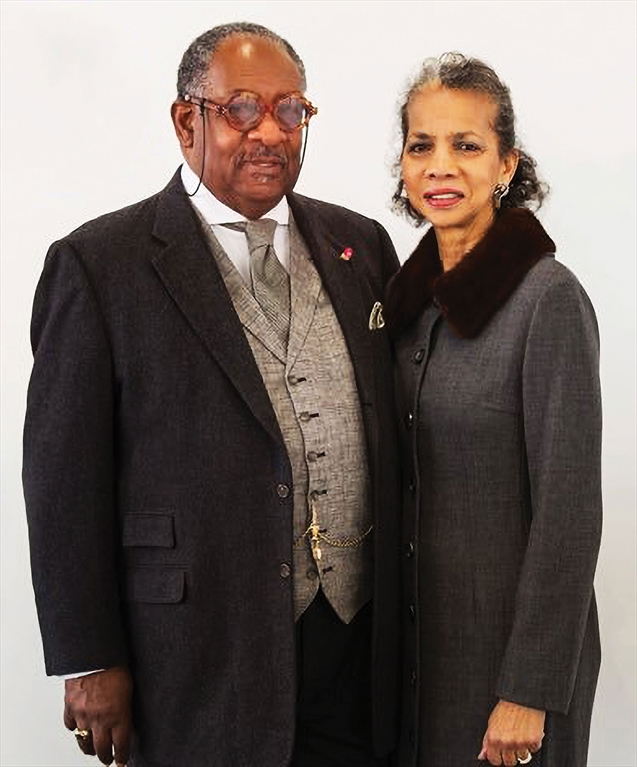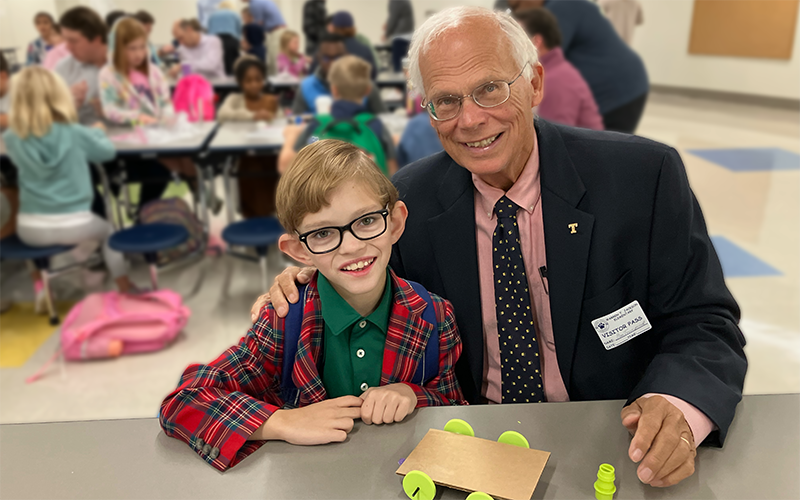Domestic Terminal Bliss
By: Ann Hoevel | Categories: Alumni Interest

The couple was there to speak with Georgia Tech’s chapter of the National Organization of Minority Architecture Students (GT-NOMAS), but the students and faculty present would have listened to these celebrated Georgia Tech alumni read appliance instructions, given the chance. In celebration of Black History Month, GT-NOMAS gave special recognition to the Stanleys as the first African-American graduates of the Tech architecture program and trailblazers in the architecture community. Bill earned his architecture degree first, and then Ivenue followed just five years later.
Bill and Ivenue went into business together in 1978. More than 40 years later, their firm—Stanley Love-Stanley P.C.—stands as one of the oldest African-American architectural practices in the South. They focus on the concept of total design and the integration of planning, socially conscious architecture and interiors. They’ve worked on a wide range projects that have made a great impact on Atlanta—notably the Olympic Aquatic Center at Georgia Tech (now the Campus Recreation Center), the renovation and expansion of Grady Memorial Hospital and the creation of a new sanctuary for the historic Ebenezer Baptist Church.
It’s no surprise, then, that this dynamic duo rolled up their sleeves with several fellow African-American Tech grads on one of their latest projects—the stunning new canopies that cover the curbside pick-up and drop-off areas at Hartsfield-Jackson Atlanta International Airport’s domestic terminals.
Stanley Love-Stanley, PC joined Chasm Architecture and HOK to take on the design phase of the canopy project. Along the way they worked with Franklin Rucker, CE 79, the former director of design and planning for the airport, Kofi Smith, IE 99, MBA 09, the president-CEO of the Airport Airlines Terminal Corporation, and Ralph “Ted” Phillips, Arch 93, the principal and co-founder of Synergy Development Partners.
Working with the firm Stevens & Wilkinson, founded by his father, Preston Stevens Sr., Cls 1919—whose architecture studies at Georgia Tech were interrupted by WWI, and another Tech grad, Flippen Burge, Arch 1919—Stevens took the first stab at modernizing the city’s transportation hub.
Today, the Hartsfield-Jackson canopy project is more than halfway completed. In November 2018, construction on the North Terminal was finishing up, and 19 steel trusses were erected at the South Terminal.

It’s clear that Bill and Ivenue, along with their fellow Yellow Jackets, have given the city of Atlanta and the world beyond a wide number of architectural treasures. The couple, in particular, have also been avid supporters of the College of Design and Georgia Tech. In fact, what they’ve given back to generations of Tech students along the way has been truly transformational.
“When I was 12, I decided to become an architect,” says Candace Seda, student vice president of GT-NOMAS. “And then my dad said, ‘OK—first you need to meet Bill Stanley.’”And she did. “Bill knows everyone,” Seda says. “He told us: ‘Hard work overcomes talent. Stick with it, and find those people who can encourage you along the way.’”
“We believe in giving back," Love-Stanley says. "We have to bring someone else up with us. That's the only way that we can survive."
Ivenue is similarly iconic for African-American architecture students, Seda says. Contemporary studies show that less than one percent of registered architects are black women.
To get such generous guidance from a pioneer and principal like Ivenue is an incredible gift, Seda says. “Ivenue paved the way for us in the South,” she says.
“I think we both feel that we have a moral obligation to make it better,” Ivenue says. “We believe in giving back. We have to bring someone else up with us. That’s the only way that we can survive.”
So the next time you go to Hartsfield-Jackson International Airport, and you see those beautiful canopies in place, remember Ivenue and Bill and the fellow Tech grads who helped create them and so many other inspiring spaces. They certainly have made Atlanta and Georgia Tech better places to live.


